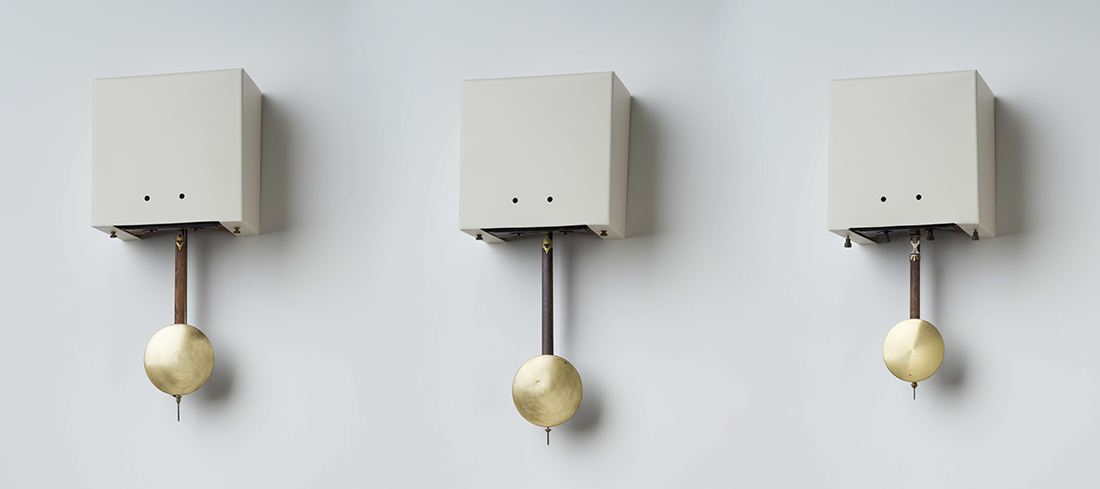
Gideonsson/Londré, Hours, 2017 © Gideonsson/Londré/Bildupphovsrätt 2025
Hours, 2017
Gideonsson/Londré
Curator Asrin Haidari reflects on the challenge of collecting performative works — like Hours, kept alive through daily acts of care and embodied attention.
Runtime: 03:57
Asrin Haidari: Everyday here at the museum, a short activity interrupts the regular working rhythm. At two o’clock sharp, a museum host, climbs a ladder, takes out a key, and, in turn, slowly winds up three clocks. A simple, but important gesture — one that keeps an artwork alive.
Hello, my name is Asrin Haidari. I’m a curator here at Moderna Museet, responsible for Swedish and Nordic contemporary art in the Collection.
One aspect of my work is ensuring that the artist’s original intention and ideas for the realisation of their artwork are successfully accommodated within our museum environment. This means ensuring we both communicate – and preserve – the knowledge required for an artwork to be shown as it was intended.
The artist duo Gideonsson/Londré, based in Kallrör, Jämtland, Sweden, conceived and created the three clocks that make up the artwork Hours — a work that exists somewhere between sculpture and performance.
In this artwork, each clock strikes once every 30 minutes, but not at the hour of half hour. Over time, the variations in clock’s pendulum and changes in atmospheric conditions, cause each clocks’ time keeping to drift slightly, each finding its own rhythm and changing their relationship to one another throughout the exhibition.
What does it mean to nurture and care for something? When does repetition turn into ritual? Is time something to be lived rather than measured? Where do we find meaning in the everyday? Can two bodies find a shared, third form — one that shifts focus from the individual to the act itself?
Guided by their interest in the passage of time and in hidden forms of knowledge, Gideonsson/Londré experiment in their artistic practice with different forms of mental and physical synchronization. They impose time-related restrictions on their practice—such as unconventional working hours—creating a framework that shapes their artistic process.”
Hours was first shown in 2014, at the artists’ graduation exhibition at the Royal Institute of Art in Stockholm, and was originally titled Four Hundred and Thirty-Five Hours. For 435 hours, the duration of that initial exhibition, Gideonsson/Londré read aloud letters they had written to each other during a week of isolation on an island, where an irregular pendulum clock dictated their entire rhythm of life. They wound the clock every hour. Through this repetition, a special awareness emerges—an embodied attention that reaches beyond what the mind can grasp.
In preparing to display Hours at the museum for the first time, we wanted to capture the backstory and creative processes behind the work. We met with the artists to explore the work in detail — its creative concept and technical components, discussing challenges they had encountered and how to prevent them in future. One crucial question: how to manifest the performative aspect of the original artwork in the artists’ absence?
Before entering the museum collection, the artists’ performance was integral: they carried each other to form a human ladder in order to reach the clocks, which are today installed at a height equal to their combined length in that position.”
Today, museum hosts wind Hours. The artists demonstrated the technique—how to hold the key, sense the resistance, know when to turn. It’s embodied knowledge that can only be learned by doing.”